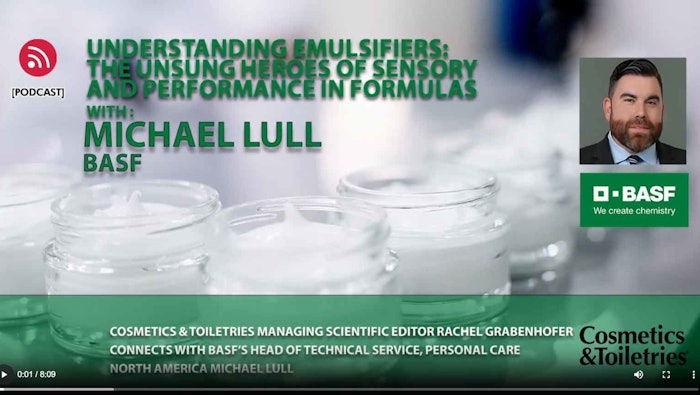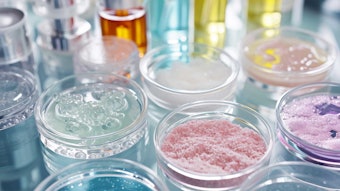
This podcast is sponsored by: BASF Corporation
In this sponsored podcast, Michael Lull, head of N.A. technical service for personal care at BASF, provides a primer about emulsifiers including their chemistry, trends and sensory effects. Insights on their use and examples from the company's portfolio also are given.
See related: BASF Attains Lower Carbon Footprint Certification for Geraniol Extra BMBcert
"You can divide [emulsifiers] into two main categories," he explains. "You have your ionic emulsifiers, which can be anionic, cationic or amphoteric; and your nonionic emulsifiers. Both of these types consist of a hydrophilic head group and a lipophilic chain or tail group, and are comprised of various chemistries."
He delves deeper into the chemistry and explains their function. "In your formulation, [emulsifiers] sit at the droplet interface, stabilizing the droplets and reducing the interfacial tension through the formation of either steric barriers or through electrostatic repulsion. [T]hey even play a role in the aesthetics of your formulation, influencing the consistency, texture and skin feel; and they can be functional as well, bringing benefits to skin."
Lull also explains how BASF is addressing today's demand for sustainable emulsifiers. "We created the Emulgade Verde series of products, which is comprised of materials that are manufactured using a solvent-free process, offering clean, 100% naturally derived, readily biodegradable emulsifier solutions with a wide range of applications. ...[T]hey work across a multitude of different product categories like skin and body care emulsions, sunscreens, hair conditioners and even makeup applications."
Learn more about the chemistry of emulsifiers and BASF's offerings — listen now to the free podcast!










